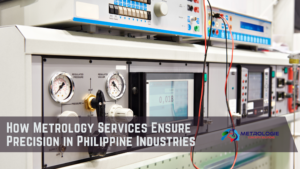Introduction
Risk management is a cornerstone of business continuity and success. In industries that require temperature-sensitive processes, like food manufacturing, pharmaceuticals, and logistics, maintaining consistent environmental conditions is vital. Thermal mapping has emerged as a critical tool for identifying risks and mitigating them before they escalate.
In the Philippines, with its tropical climate and growing industries, thermal mapping is not just a luxury but a necessity. This article explores why thermal mapping should be an integral part of your risk management plan, offering insights into its benefits, applications, and best practices.
1. Understanding Thermal Mapping
a. What Is Thermal Mapping?
Thermal mapping is the process of assessing temperature variations within a specific environment or equipment. This involves placing sensors at strategic points to monitor and record temperature fluctuations over a set period.
b. Applications of Thermal Mapping
Thermal mapping is widely used in:
- Warehouses and storage facilities
- Refrigerated vehicles
- Manufacturing plants
- Pharmaceutical and healthcare facilities
- Data centers
c. Why It Matters
Temperature inconsistencies can compromise product quality, lead to compliance violations, or cause equipment failures. Thermal mapping helps businesses identify and address these issues proactively.
2. The Importance of Risk Management in the Philippines
The Philippines faces unique challenges that make risk management essential:
- Tropical Climate: High humidity and fluctuating temperatures can affect sensitive products and equipment.
- Natural Disasters: Typhoons, earthquakes, and floods pose significant risks to infrastructure.
- Regulatory Requirements: Industries must comply with strict local and international standards.
Thermal mapping plays a pivotal role in mitigating these risks by ensuring controlled environments and reducing the likelihood of costly disruptions.
3. How Thermal Mapping Supports Risk Management
a. Ensures Compliance with Standards
Industries like pharmaceuticals, food production, and logistics are subject to stringent regulations, such as:
- FDA Good Storage Practices (GSP)
- WHO Good Distribution Practices (GDP)
- ISO 17025
Thermal mapping helps businesses adhere to these standards, avoiding penalties and ensuring customer trust.
b. Prevents Product Loss
Temperature-sensitive products like vaccines, frozen foods, and chemicals require strict temperature controls. Thermal mapping identifies potential hotspots or cold spots that could compromise product integrity, reducing spoilage and waste.
c. Improves Operational Efficiency
By understanding temperature distribution within a facility or equipment, businesses can optimize:
- Cooling and heating systems
- Energy consumption
- Storage layouts
d. Enhances Equipment Reliability
Thermal mapping detects irregular temperature patterns that may indicate equipment malfunctions. Addressing these issues early prevents costly breakdowns and extends equipment lifespan.
4. Industries That Benefit from Thermal Mapping
a. Pharmaceuticals
- Ensures proper storage of vaccines, medicines, and biological samples.
- Mitigates risks of non-compliance with healthcare standards.
b. Food and Beverage
- Maintains quality and safety of perishable goods.
- Prevents contamination due to temperature fluctuations.
c. Logistics and Cold Chain
- Ensures temperature stability during transport of sensitive goods.
- Reduces risk of delays caused by equipment failures.
d. Data Centers
- Prevents overheating of servers and IT equipment.
- Enhances energy efficiency.
e. Manufacturing
- Monitors temperature-sensitive production processes.
- Reduces downtime caused by equipment issues.
5. Best Practices for Implementing Thermal Mapping
a. Plan Strategically
- Identify critical areas to monitor.
- Define the duration and frequency of mapping activities.
b. Use Advanced Equipment
Invest in reliable sensors and data loggers that provide accurate and consistent readings.
c. Analyze Data Thoroughly
- Identify patterns and anomalies.
- Use insights to adjust processes and systems.
d. Regular Monitoring and Calibration
- Perform thermal mapping regularly to adapt to environmental changes.
- Calibrate sensors to maintain accuracy.
e. Partner with Experts
Collaborating with professionals like Premier Physic Metrologie ensures thorough and reliable thermal mapping processes.
6. Case Studies: Real-Life Applications of Thermal Mapping
Case Study 1: Pharmaceutical Company in Manila
A pharmaceutical company struggled with maintaining consistent storage conditions in its warehouse. Thermal mapping revealed temperature inconsistencies in certain areas, allowing them to adjust their HVAC system and prevent product spoilage.
Case Study 2: Cold Storage Facility in Cebu
A cold storage facility used thermal mapping to optimize its cooling system. By identifying cold spots, they redistributed products more efficiently, reducing energy consumption by 15%.
Case Study 3: Logistics Firm in Davao
A logistics company integrated thermal mapping into their fleet of refrigerated vehicles, ensuring consistent temperature conditions for perishable goods during transport.
7. Cost vs. Benefits of Thermal Mapping
a. Initial Investment
Thermal mapping requires upfront costs for equipment, training, or third-party services.
b. Long-Term Savings
- Reduces waste and product loss.
- Lowers energy costs by optimizing systems.
- Prevents penalties for non-compliance.
c. ROI
The financial and operational benefits far outweigh the initial investment, making thermal mapping a cost-effective risk management tool.
8. Future Trends in Thermal Mapping
a. Integration with IoT
Smart sensors connected to IoT platforms provide real-time monitoring and analytics, enabling quicker decision-making.
b. AI-Driven Insights
Artificial intelligence helps predict risks and recommend proactive measures.
c. Sustainability Focus
Future thermal mapping solutions will emphasize energy efficiency and eco-friendly practices.
Conclusion
Thermal mapping is a powerful tool for businesses in the Philippines, providing a proactive approach to risk management. By ensuring compliance, preventing losses, and optimizing operations, it safeguards both products and processes.
Incorporating thermal mapping into your risk management plan isn’t just a smart decision—it’s a necessary one for staying competitive in today’s market. Collaborate with experts like Premier Physic Metrologie to ensure accuracy and reliability in your thermal mapping efforts.




